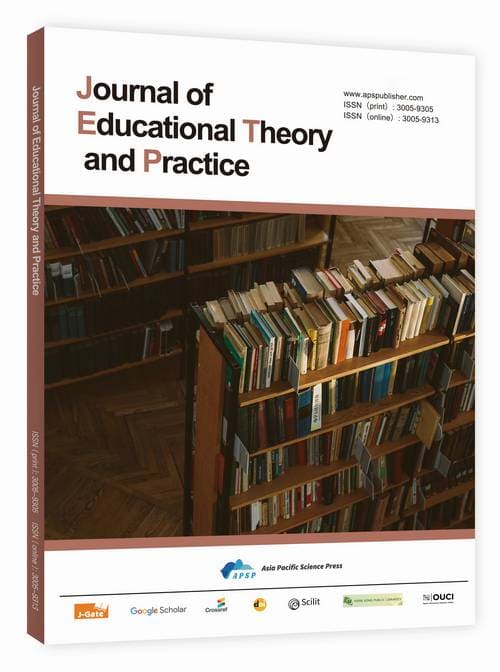Academic Affiliation Structure and Provincial First-Class Discipline Construction: A Quantitative Study of 60 First-Class Disciplines in Liaoning Province
DOI:
https://doi.org/10.62177/jetp.v2i3.540Keywords:
First-Class Disciplines, Academic Affiliation Structure, University Faculty, Hiring NetworkAbstract
The development of high-quality faculty constitutes the foundational task for constructing first-class disciplines, wherein the optimization of academic affiliation structure plays a critical role in building high-level faculty teams for provincial first-class disciplines. Based on the academic CVs of 5,179 university teachers in Liaoning Province, this study examines the characteristics of academic affiliation structure across 60 first-class disciplines from three dimensions: types of academic affiliation, heterogeneity of academic affiliation structure, and centrality of academic affiliation networks. The findings reveal that the proportion of inbred faculty in Liaoning universities is generally high, with notable disciplinary variations. Herfindahl-Hirschman Index (HHI) scores differ significantly across institutions and disciplines, indicating pronounced heterogeneity in academic affiliation structure. The academic affiliation network exhibits a typical core-periphery structure, with a small number of institutions demonstrating high network centrality, and clear stratified and partitioned characteristics. Accordingly, universities in Liaoning should further optimize the academic affiliation structure of faculty, enhance the organizational openness of first-class discipline construction, and improve the overall quality of disciplines.
Downloads
References
Liaoning Provincial People's Government. Notice on issuing the "Implementation Plan for Coordinated Advancement of World-Class Universities and Disciplines in Liaoning Province" [EB/OL]. (2017-01-03)[2025-08-08]. https://www.ln.gov.cn/web/zwgkx/lnsrmzfgb/2017n/qk/2017n_dsq45/szfwj/C79C4A28004A45B7B7E20CD3C1F92EAD/index.shtml
Liaoning Provincial Department of Education. Notice on announcing the dynamic adjustment results of first-class discipline construction projects in Liaoning higher education institutions [EB/OL]. (2018-03-05)[2025-08-08]. http://xkb.dlut.edu.cn/info/1020/2122.htm
General Office of Liaoning Provincial People's Government. Notice on issuing the "14th Five-Year Plan for Education Development in Liaoning Province" [EB/OL]. (2021-12-27)[2025-08-08]. https://www.ln.gov.cn/web/zwgkx/lnsrmzfgb/2022n/qk/2022n_dsq32/szfbgtwj/617AB182218A4841A16F88D1B0602AAE/
Li, C. L., & Deng, H. Y. (2019). Quantitative Analysis of “Double First-Class” Policies in Chinese Provinces. Research in Higher Education of Engineering, (4), 145-151.
Jung, J., & Horta, H. (2013). Higher education research in Asia: A publication and co-publication analysis. Higher Education Quarterly, 67(4), 398-419.
Leydesdorff, L., & Wagner, C. S. (2008). International collaboration in science and the formation of a core group. Journal of Informetrics, 2(4), 317-325.
Li, E. Y., Liao, C. H., & Yen, H. R. (2013). Co-authorship networks and research impact: A social capital perspective. Research Policy, 42(9), 1515-1530.
Rigby, J., & Edler, J. (2005). Peering inside research networks: Some observations on the effect of the intensity of collaboration on the variability of research quality. Research Policy, 34(6), 784-794.
Wagner, C. S., & Leydesdorff, L. (2005). Network structure, self-organization, and the growth of international collaboration in science. Research Policy, 34(10), 1608-1618.
Cai, M. S., & Li, B. B. (2014). Using Game Theory to Analyzes Academic“Inbreeding”and Its Enlightenment. Journal of Educational Science of Hunan Normal University, 13(6), 116-120.
Chen, X. Y., & Zhang, C. L. (2021). On the Academic Labor Market Prestige and Impact of Double First-class Universities. Journal of Higher Education, 42(5), 62-73.
Chu, Z. F. (2017). Promoting Strategies and Reflection of World-class Universities and Discipline in Local Government--Based on 24 local "double world-class" policies texts. China Higher Education Research, (8), 50-55+67.
Liu, X. (2020). Existence, Timeliness and Rationality?. Higher Education Exploration, (12), 98-109.
Li, L. P., Shen, W. Q., & Zhao, F. Q. (2019). The Structure of Teachers' Educational Background in Elite Universities and Its Ten-year Transition——In the Case of Chemistry. Education Research Monthly, (10), 78-83.
Barnett, G. A., Danowski, J. A., Feeley, T. H., et al. (2010). Measuring quality in communication doctoral education using network analysis of faculty hiring patterns. Journal of Communication, 60(2), 388-411.
Fang, B. Y., & Zhang, D. S. (2002). Strengthening Postdoctoral Programs and Improve the Academic Affiliation Structure of Faculty. Research in Higher Education of Engineering, (2), 40-42.
Liu, X., & Yan, F. Q. (2021). The Academic Origin, Appointment Network and Research Production of Full-time College Teachers among 28 Public Universities in China. Research in Educational Development, 41(23), 65-76.
Yang, G., Yue, Y., & Niu, M. (2015). An empirical study of faculty mobility in China. Higher Education, 69(4), 527-546.
Liu, J., Lin, S. Y., Wang, Y. M., et al. (2021). Can Research-Oriented University Faculties be Admitted to the University Where They Teach: Discussions on Academic Inbreeding in Colleges and Universities. China Higher Education Research, (8), 56-62.
Jiang, H., Yang, S. D., Li, S., et al. (2023). Discipline Reputation Evaluation Based on PhD Exchange Network. Research in Higher Education of Engineering, (5), 117-123+157.
Liu, L. (2019). Does Academic Inbreeding Inhibit Academic Productivity: A Case Study Based on H Discipline in a East and a West “Double First-Class” Construction Universities. China Higher Education Research, (12), 76-83.
Sheng, Y. L. (2008). Structural Changes in Academic Qualification and Origin of Alma Mater of Tsinghua Faculty. Tsinghua Journal of Education, (2), 92-98+103.
Xu, Z. P., & Liu, Y. (2018). Hierarchical Structure of Academic Labor Market. Higher Education Exploration, (3), 109-115.
Burris, V. (2004). The academic caste system: prestige hierarchies in PhD exchange networks. American Sociological Review, 69(2), 239-264.
Li, L. P., & Shen, W. Q. (2019). The Doctoral Employment Network of Chinese Elite Universities: The Analysis of Academic Labor Market Based on Chemistry. China Higher Education Research, (11), 83-89.
Zhang, B. (2013). Departmental Stratification and Its Hierarchical Characteristics in the Ph.D.Exchange Network——A Social Network Analysis Based on Academic Structure of Part of Physics Scholars. Educational Research, 34(01), 84-90+96.
Wang, T. L., & Wang, X. N. (2021). Network Analysis of Two-way Faculty Employment in Elite Business Schools of USA. Heilongjiang Higher Education Research, 39(08), 57-63.
Han, S.-K. (2003). Tribal regimes in academia: A comparative analysis of market structure across disciplines. Social Networks, 25(3), 251-280.
[] Hagstrom, W. O. (1971). Inputs, outputs, and the prestige of university science departments. Sociology of Education, 44, 375-397.
Fairweather, J. S. (1988). Reputational quality of academic programs: The institutional halo. Research in Higher Education, 28(4), 345-355.
Cowan, R., & Rossello, G. (2018). Emergent structures in faculty hiring networks, and the effects of mobility on academic performance. Scientometrics, 117(1), 527-562.
Huang, J. X., Lu, X. M. (2011). Three Key Characteristics and Optimization of the Academic Affiliation Structure of University Faculty. Jiangsu Higher Education, (5), 41-43.
Dong, Z. F., Huang, Y., & Huang, J. X. (2012). On Problems and Optimizing Countermeasures of the Teaching Body Academic Origin Structure in Chinese HEIs——Based on the Three Perspectives of Survey and Analysis. Education Science, 28(5), 48-52.
Gu, H. B., & Zhu, Y. W. (2015). Analysis of Faculty Inbreeding between Chinese and Other Countries' Higher Education Institution in Department of Economics. China Higher Education Research, (3), 48-51.
Chen, P., & Tian, L. (2015). The Study on the Structural Characteristics of Institutional Research Co-author Network in China——Based on the Statistical Analysis of 49 Educational Journals in CSSCI Catalogues in 10 years (2005—2014). China Higher Education Research, (11), 36-42+48.
Downloads
How to Cite
Issue
Section
License
Copyright (c) 2025 Pei Chen, Xiqi Zhang

This work is licensed under a Creative Commons Attribution-NonCommercial 4.0 International License.
DATE
Accepted: 2025-08-20
Published: 2025-09-08

















